John Wooden remembered
June 8, 2010
I consider it one of the greatest privileges of my life that, over the years, I was able to share quality time with UCLA Coach John Wooden. Coach, as we all called him, died last Friday night, only months shy of his 100th birthday. He was as influential a teacher and life coach as I’ve ever met.
I first encountered Wooden when I was a UCLA student. In 1970, as the campus was roiled in protest, I passed by the Royce Hall steps and saw a peaceful and intently engaged crowd gathered around him. I stopped and listened as they talked basketball, politics and academics. What was striking about the scene was the serenity of the crowd. Without knowing it, Wooden had brought a sense of calm to the turbulent campus and to all of us who hung on his words. When he headed toward Pauley Pavilion, I shook his hand and went about my business at the Research Library.
I didn’t meet Coach again for several years, not until I’d been elected to the City Council. I had invited him to City Hall to present him with a resolution after he retired from coaching. The signed picture of that ceremony still hangs proudly in my office.
Back then, I still viewed him mostly as a sports hero of epic proportions. But that would change when, many years later, I got the opportunity to know Coach Wooden, the person. Thanks to mutual friends and UCLA classmates, I found myself one night having dinner with him. We talked about his life and his philosophy and a bit about sports. One dinner led to another, and over the years, I must have spent a couple dozen afternoons and evenings in his presence.
The more I got to know him, the more I came to understand that the world view he offered was far more profound than any national championship—even 10 of them. I bought all of his books and read them religiously. I discussed his writings with him and listened intently to his soft spoken but powerful story-telling of his life experiences. Always, it was about the lasting things in life—values, philosophy, Shakespeare, the Bible and the countless poets whose prose he could recite from memory, even in his 99th year.
A bunch of us who were associated with UCLA would take him out to dinner around his birthday every year at the Valley Inn in Sherman Oaks, one of his favorite haunts. For the last many years, it was a standing appointment on my calendar. Nothing, absolutely nothing, would get in the way of that dinner. The attendees included people with whom Wooden had a decades-long relationship (how I got into that group is beyond me, but I never asked questions). His friends included former UCLA Chancellor Charles Young, former football coach Terry Donahue, former Athletic Director Pete Dalis and several others.
This was a group of pretty accomplished individuals with healthy egos and resumes. Stories abounded at these dinners as each member of the group regaled Wooden with reminiscences of their times together. Generally, Coach just listened. But once in a while he’d choose to speak. When that happened, this group of powerful and influential friends would fall silent—one and all, a dozen or more of us. It was not only a sign of respect, but also a genuine desire to harvest the wisdom from his words.
During one of those dinners, Wooden quoted from a poem that one of his former players, retired Vice-Chancellor Pete Blackman, wrote around 1960. It recounted a road trip the Bruins had taken to Houston. When the team arrived at the motel, the check-in clerk advised Wooden that there were rooms reserved for the white members of the team but that the black members would be sleeping in a place reserved for them in the basement.
The players and Coach Wooden huddled and decided they’d all leave the motel and find someplace else that night, even though there was no guarantee they’d be able to find any place that would take all of them in—black and white. Blackman’s poem memorialized that night. I don’t remember the verse but, 45-years-later, Wooden did, reciting it to us without missing a beat or skipping a word. It gave us chills, one of those moments none of us will ever forget.
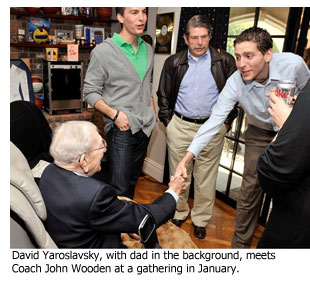 Last January, the last time I saw Coach, my friend Angelo Mazzone was hosting a brunch at his home for Wooden. The guest list was very limited. It included many of Wooden’s family members, along with Joe Torre, Mike Scioscia, Bill Sharman, Vin Scully and a few others. What ensued were several hours that I only wish we had videotaped. There was Wooden, physically frail but mentally sharp, sitting across from Dodgers’ manager Torre and Angels’ manager Scioscia, who were exchanging stories about their experiences in baseball and as life coaches. (Wooden loved baseball and had a great baseball mind. In fact, around 1970, the Pittsburgh Pirates asked him to be their manager, an offer he respectfully declined).
Last January, the last time I saw Coach, my friend Angelo Mazzone was hosting a brunch at his home for Wooden. The guest list was very limited. It included many of Wooden’s family members, along with Joe Torre, Mike Scioscia, Bill Sharman, Vin Scully and a few others. What ensued were several hours that I only wish we had videotaped. There was Wooden, physically frail but mentally sharp, sitting across from Dodgers’ manager Torre and Angels’ manager Scioscia, who were exchanging stories about their experiences in baseball and as life coaches. (Wooden loved baseball and had a great baseball mind. In fact, around 1970, the Pittsburgh Pirates asked him to be their manager, an offer he respectfully declined).
Again, like those of us at the Valley Inn, Torre and Scioscia were in awe of Wooden. They asked if he had ever seen Babe Ruth or Lou Gherig play, or whether he had ever met Dizzy Dean or Joe DiMaggio. These highly accomplished men behaved like kids with a chance to chat with their hero and get a glimpse of history. But they, too, knew he was bigger than sports, coaxing him into imparting words that they might carry into their own futures.
I sat at the table just taking it all in, feeling blessed for the extraordinary opportunity. I had brought my grown son with me knowing that this might be the only chance he’d have to spend any kind of meaningful time with Wooden. David didn’t squander the opportunity. He asked Wooden the name of his favorite book. “The Bible,” Wooden responded. My son then asked the name of his next favorite book. “Many of the books written about Abraham Lincoln,” Wooden said. “I’ve always been interested in Lincoln.”
Indeed, Wooden often cited one of Lincoln’s quotes: “Most anyone can stand adversity, but to test a person’s character, give them power.” That gave us all food for thought.
What has been so interesting about the passing of John Wooden is the amount of attention given to his philosophy of life and his role as a teacher and life coach. We’ve heard this from his players, his associates, his family and his friends. It’s worth noting that while Wooden coached at UCLA for 28 years, he has been retired for 35 years, time he certainly didn’t waste. He lectured and wrote. He spoke to school assemblies and charitable organizations. He rarely turned down a speaking invitation and never refused an autograph request.
Coach Wooden never wore his philosophy on his sleeve. He simply lived it. That is what I’ll remember most about him and that is what will endure of his life. In the last few days I’ve reviewed many of Wooden’s philosophies, and I’ll close by sharing some that most resonate with me:
- “Ability gets you to the top; character keeps you there.”
- “Character is more important than reputation, because reputation is merely what other people think of you; character is what you really are, and only you know what that is.”
- “Failure is not fatal, but failure to change might be.”
- “You are your word. Don’t give your word unless you intend to keep it. A leader whose promise means everything is trusted.”
- “The star of every successful team is the team. Individuals don’t win games, teams do.”
- “The purpose of criticism is to correct, improve and change. It is not to humiliate, demean, or punish.”
- “Don’t confuse activity with achievement.”
- “Favor firm suggestions over strict rules.”
- “Practice doesn’t make perfect; perfect practice does.”
- Great leaders give credit to others, but accept the blame themselves.”
Rest in peace Coach John Wooden.
Posted 6/8/2010
‘Shocking’ accounting mess at probation
June 7, 2010
Over the past five years, the Board of Supervisors has allocated $79 million to the county’s Probation Department to improve its juvenile facilities and reorganize its management structure.
The question on Tuesday: Where’d all that money go?
In a report to the board that triggered sharp reactions, the Chief Executive Office acknowledged that it could not definitively determine whether probation officials had spent the funding for its intended purposes—including the hiring of 901 employees—“because of the inadequacy of the department’s records.”
“The depth of the problems in this department are shocking,” Chief Executive Officer William T Fujioka told the supervisors.
Fujioka’s statements drew strong criticism from the supervisors, who for months have expressed concern about why the department was continuing to compile deficits when the board had provided so much money. In April, voting on a motion by Supervisors Zev Yaroslavsky and Don Knabe, the board directed the CEO to investigate the matter, leading to Tuesday’s report, which fell far short of the answers the board wanted to hear.
“Seventy-nine million is allocated to this department and nobody knows where it went?” Yaroslavsky asked incredulously during Tuesday’s board. Criticizing both the department and the CEO’s office for the slowness of the inquiry, he added: “This sounds to me like it is a colossal mess.”
Supervisor Gloria Molina didn’t pull punches, either.
“If it was your own checkbook that was paying for this, believe me you’d be up all night along trying to figure out where it’s going,” she said, questioning whether staffers were working intensely enough to find the answers.
Molina also raised the possibility that the lack of records leaves open the possibility that the department has hired “ghost employees” who don’t really exist or employees who collect paychecks but don’t actually show up to work.
At the end of the heated discussion, the board, frustrated by what it considered the slow pace of the inquiry, approved a motion by Supervisor Mark Ridley-Thomas to bring the Auditor-Controller’s Office on board. The CEO, Probation and Auditor-Controller will report results back to Supervisors in early July.
Most of the $79 million had been allocated to bring the Probation Department into compliance with mandates issued in 2004 by the U.S. Department of Justice, including a directive to improve client-to-staff ratios and increase personnel for health and mental health care. In all, 901 employees were to be hired.
But the Probation Department has been unable to provide a full accounting of the personnel.
 A recent spot check of staffing at the department’s Downey headquarters using payroll data showed that the department’s records do not accurately reveal the location of the new workers. Chief Probation Officer Donald Blevins, who arrived in April and was charged by the supervisors with fixing longstanding problems, said that 146 of the 548 staffers nominally working at headquarters were actually assigned to another office, despite records to the contrary.
A recent spot check of staffing at the department’s Downey headquarters using payroll data showed that the department’s records do not accurately reveal the location of the new workers. Chief Probation Officer Donald Blevins, who arrived in April and was charged by the supervisors with fixing longstanding problems, said that 146 of the 548 staffers nominally working at headquarters were actually assigned to another office, despite records to the contrary.
He extrapolated that up to 2,000 of the department’s 6,100 employees may work at locations other than those shown in Probation records and promised he’d continue to “aggressively [track]” the locations of all employees.
Blevins and the CEO also noted that they believe newly hired employees were working in the areas intended because the department had satisfied the Justice Department’s issues. “But we cannot report with certainty which positions were hired, or where those staff were deployed at the time,” the CEO’s report.
The report did disclose two funding problems in which money intended to solve particular issues did not reach the intended target.
In 2008-9, supervisors appropriated $6.5 million toward the purchase of a medical records system called PEMRS, but spent only $500,000 on the program. The other $6 million helped offset the department’s deficit that year. The supervisors had to allocate another $6 million the following year to buy the records system.
In addition, about $2.5 million earmarked for rents in 2008-2009 was apparently applied to the department’s deficit.
During Tuesday’s discussion, Molina told Blevins, the new probation chief, “we’re not blaming you, because we know you inherited it. But we’re asking you to really take command of it.”
Blevins, for his part, assured the supervisors that he was doing his best to account for the department’s funds and personnel.
“We are aggressively tracking this,” Blevins said.
Posted 6/7/10
On track for a faster train to Westwood
June 7, 2010
 It’s a frustrated motorist’s drive-time dream: ditching the westbound traffic and jumping on a subway to Westwood. That rush hour fantasy just got closer to reality with recent developments in Washington that boost the subway’s chances for federal funding while potentially making it much quicker to build.
It’s a frustrated motorist’s drive-time dream: ditching the westbound traffic and jumping on a subway to Westwood. That rush hour fantasy just got closer to reality with recent developments in Washington that boost the subway’s chances for federal funding while potentially making it much quicker to build.
How much quicker? Construction on the $4.2 billion project could start in 2013, and extend the subway all the way to Westwood by 2017. (Earlier projections had it getting as far as the Fairfax District by 2019 and not arriving in Westwood until 2036.) In other words, under the accelerated timetable, somebody who’s now in the 5th grade could be riding the subway to their freshman classes at UCLA—instead of waiting until long after they get their Ph.D.
The Westside Subway Extension is one of a dozen local transit projects that would be accelerated under the so-called 30/10 plan, which on Friday got a boost from Washington when U.S. Senator Barbara Boxer released a letter from Transportation Secretary Ray LaHood signaling administration support for the initiative. The 30/10 plan, initiated by Los Angeles Mayor Antonio Villaraigosa and unanimously supported by the Metropolitan Transportation Authority’s Board of Directors, would borrow against future Measure R funding to build in 10 years projects that ordinarily would have taken 30. (For a full list of the projects, click here.)
Boxer also announced another development with major ramifications for the Westside Subway Extension project. Instead of breaking the subway extension into three separate legs, the entire 9.3-mile stretch will now be considered as a single project by the Federal Transit Administration.
That’s important because the line’s cost-effectiveness—the number of riders and how much time they’ll save measured against the cost of the project—is more compelling with the inclusion of the Westwood station, which is projected to have between 11,000 and 14,000 boardings a day. And that could provide a competitive edge when it comes to obtaining the federal funding that will be necessary to complete the project.
“This represents the most signficant ‘good news’ for the Wilshire subway extension since the passage of Measure R in 2008,” said Supervisor Zev Yaroslavsky, a member of Metro’s Board of Directors. “Federal transit officials recognize the value of accelerating the subway extension and the other 11 Measure R transit projects so that we can realize their benefit in our lifetime.”
Aside from the federal money Metro would need to borrow as part of the 30/10 initiative, officials also are counting on the federal government to kick in about half the subway’s cost—some $2.1 billion. Since the project needs to compete with other projects around the country to secure those funds, the decision to evaluate the extension as a whole is key.
Raffi Haig Hamparian, Metro government relations manager for federal affairs, said the decision to evaluate the subway as a single project “sets the stage for a major—and some would say overdue—federal investment in Los Angeles County.” He added that the fast-tracking of the subway, along with other projects, including the Regional Connector, would move the region “one step closer to having a world class rail system in L.A. County, something voters envisioned when they overwhelmingly supported Measure R.”
Even with the latest developments in Washington, the subway project still has a long way to go before construction can start. For one thing, despite Transportation Secretary LaHood’s letter to Boxer, the 30/10 plan has yet to be formally embraced by the government. And funding for the subway under the federal “New Starts” program is not assured.
Preliminary environmental work on the project is underway now, with a series of community meetings scheduled for this summer before the planned midsummer released of a draft environmental impact report. (Here’s an informative presentation from the meetings held in April.)
Public hearings on the report will take place before it is presented to Metro’s Board of Directors In September. Once a “locally preferred alternative” route is adopted, work will begin on a final environmental impact report expected to go before the board in the fall of 2011.
Then come a number of steps—including obtaining an early commitment from the Federal Transit Administration to provide federal money for the project—before a final funding agreement could be negotiated.
Still, the latest developments from Washington mean “we’re now on a fast track,” Hamparian said. “We used to talk about the subway in the abstract—like a Picasso painting. Now people ask, ‘When is construction going to start?’ “
Posted 6/07/10
A graduation full of inspiration
June 7, 2010
Maria Burgos is on her way to the Ivy League. Five years ago, she was selling gum on the streets of Tijuana.
Maria was only 13 at the time, but she knew this was no life for her—mired in poverty, working long hours alongside a father who’d been deported to Mexico after a string of arrests in L.A. By then, she’d already been removed from her parents and returned to them several times, starting after her first birthday.
Begging and pleading, Maria convinced her parents to let her cross the border to stay with a family friend in Los Angeles, where she was born as a legal resident and wanted to attend school again. “I knew I couldn’t control all aspects of my life,” she recalls, “but I knew I could control my education. I just went for the A’s.”
So began a rocky journey that would land Maria in six foster homes by her freshman year, when she finally found stability and success in the care of a middle school counselor and her husband. This year, Maria graduated from Pioneer High School in Whittier with a 4.02 grade point average and has been accepted to Brown University in Rhode Island. The 18-year-old says she wants be a pediatrician.
“I never felt sorry for myself,” says Maria, who was captain of the varsity cross country team and has run four L.A. Marathons. “Being in foster care was so much better than being with my parents. I didn’t see it as an obstacle. I saw it as an opportunity.”
On Tuesday night, Maria and more than a hundred other foster youth will be honored for their academic achievements and awarded thousands of dollars in scholarships during a gala at Walt Disney Concert Hall. The event, “Celebration 2010,” is now in its 21st year and is largely organized by L.A. County’s Department of Children and Family Services and United Friends of the Children, a private group that helps foster youth successfully transition into adulthood. The evening’s host will be comedian Paul Rodriguez, with actress Jada Pinkett Smith as the keynote speaker.
“Insane challenges”
The young honorees are among the most extraordinary of graduates in this season of high school commencements. Still in their teens, they’ve suffered years of abuse and abandonment. They’ve bounced from one school to the next, creating gaps in their education. Too often, they’ve been told by grown-ups at home and in the classroom that they’ll never amount to much.
“They have this amazing resilience,” says Monica Bomkamp Enia, education program director for United Friends of the Children. “They go through these insane challenges and still come out on top.”
Frequently, she says, the successful students have someone in their lives—a teacher, a grandparent, a coach, a social worker—who has told them: “You can do this and I’m going to help you.” Sometimes, she says, they’re driven by nothing more than a powerful determination to prove people wrong.
“Our take,” Enia says, “is that there is no reason people should expect less from them.” She says her organization, founded by the late Nancy M. Daly, is dedicated to becoming the positive voice in the lives of foster children—and backing it up with logistical and financial support.
Forty students participating in Tuesday’s event will receive UFC scholarships of $15,000 spread across five years, along with help picking colleges and finding other funding sources. The others also will receive grants of various sizes from a variety of organizations. Of those who’ve previously participated in UFC’s college sponsorship program, more than 70% have graduated—an off-the-charts rate for foster youth.
Each student who’ll proudly stride across Disney Hall’s stunning stage has traveled a uniquely tortuous route to get there. But they all share this: a fierce determination, rooted in their difficult journeys, to build promising futures for themselves.
“Itching to go”
 Cynthia Lapos found her voice at Canyon High School.
Cynthia Lapos found her voice at Canyon High School.
As a member of the debate and speech team, she became one of California’s top competitors in oratorical interpretation—taking an existing speech and recreating the effect intended by the author.
“I can say things in a speech and the audience will believe me,” she says. “They’re not seeing me as someone who was abused for nine years. They’re viewing me as someone who is doing a great job.”
For years, Cynthia kept silent about her father’s alleged abuse. “I didn’t want the family to crumble and fall away,” she says. But her secret was revealed when her stepmother discovered a detailed letter Cynthia had written about her treatment and had stashed away, thinking she might someday be brave enough to give it to someone.
With no direct evidence against Cynthia’s father, who denied the abuse allegations, no charges were filed. Still, the discovery of the letter led to Cynthia’s placement at age 16 in a Canyon Country foster home with her best friend, a former foster youth who’d been adopted by the family.
“We kept our foster license open but we weren’t intending to have another child,” says Sheri Flay, who, with her partner Victoria Bennett, has been caring for Cynthia for two years. “It was just the right thing at the right time.”
In the aftermath of all this upheaval, Cynthia says “she fell into the deepest state of depression…I put all the blame on myself when I was the victim.” She worried that she was “tainted” and that people “wouldn’t want to be with me.” Nonetheless, she says, “I wouldn’t let myself drop below a 3.0.”
And she didn’t.
Cynthia, who turns 18 on Thursday, graduated from Canyon High School with a 3.31 grade point average. In the fall, she’ll be off to California State University at Northridge, where she’ll live on campus. “I’m itching to go,” she says. “College has been my dream.”
In an essay Cynthia wrote as part of the application process for Tuesday’s event, she put any doubters on notice: “I am someone who will not back down. I will not give up.”
“Bragging rights”
 Since the age of 10, Alexander Deiongh has lived in foster homes stretching from Fontana to Long Beach, seven in all. He says his birth mother was “great” to him and his brother, except when she didn’t take her medication for a bi-polar condition, which was often. “When she’s not on her medication,” he says, “she’s not worried about us.”
Since the age of 10, Alexander Deiongh has lived in foster homes stretching from Fontana to Long Beach, seven in all. He says his birth mother was “great” to him and his brother, except when she didn’t take her medication for a bi-polar condition, which was often. “When she’s not on her medication,” he says, “she’s not worried about us.”
Alexander remembers many times when police and social workers removed him and his brother from their Highland Park home after their mom vanished, leaving them to fend for themselves. Eventually, the court would reunite the family, but each time the story was the same.
The last time Alexander lived with his mother was in his sophomore year at Franklin High School. He and his brother were determined to keep her on track. “We thought we could ride it out and help her with her medication,” he says. But once again, she disappeared, this time to Las Vegas.
“We didn’t tell anyone because we didn’t want to be taken away again,” he says.
But someone did alert authorities and the boys were removed for the final time. They eventually were placed in separate homes after Alexander repeatedly complained that his brother was physically abusive. Since November, 2007, Alexander has lived in North Hollywood with a couple he says have provided him with the financial and emotional support he needed to excel.
“I’d like to say it’s all me,” the 18-year-old football player says of his success. “But it’s also the foster parents who guide you.”
In two weeks, Alexander will graduate from North Hollywood High School with a 3.65 grade point average. In the fall, he’ll be attending UCLA, focusing on math and the sciences.
He admits to being motivated by “bragging rights” because of the rough treatment he received from his brother, who was always critical of him and has not fared nearly so well. If Alexander saw him today, he says, he’d tell him off: “You criticized me the whole time and look at me and look at you!”
But that’s far from the whole of it.
“I knew that I didn’t want to spend my whole life on minimum wage jobs,” he said the other day after being fitted for a prom tuxedo. “I did not want to live up to a stereotype of what a foster kid is.”
Posted 6/07/10
Property tax to fall for many county homeowners
June 4, 2010
A new round of property-tax notices are heading to some Los Angeles County homeowners later this month, and the result will be a smaller tax bite for more than 400,000 local home and condo owners.
Los Angeles County Assessor Robert Quon announced this week that his office has reassessed the values of all 560,000 single-family homes and condos bought in the county between the summers of 2003 and 2009. The survey also included some home sold in earlier years in areas hit hard by the housing crisis.
The bad news: values dropped on more than 70 percent of the residences. The average plunge was $162,000 for homes and $133,000 for condos.
The silver lining for those property owners: falling prices will mean an average 2010 tax savings of between $1,500 and $1,800.
Notices of the reassessments should land in mailboxes by the end of June. The actual property tax bills will be issued in October. Householders who disagree with the Assessor’s finding—whether part of the reassessment or not—can file a free Decline-in-Value application by November 30, either by calling 888-807-2111 or filling out the form at the Assessors’ website, here.
Posted 6/4/10
Deliberations start on county budget
June 4, 2010
Compared to the ongoing fiscal crises and political drama in Washington and Sacramento, the Los Angeles County budget deliberations scheduled for Monday, June 7 at 9:30 a.m. will be comparatively sedate. But that’s mainly because the single biggest impact–the potential loss of $1.25 billion in state funding recently outlined in Gov. Arnold Schwarzenegger’s “May Revisions,” or roughly 5.4% of the County’s overall budget–has not yet been factored in, due to uncertainty over the Legislature’s response. County CEO William T Fujioka’s board letter outlines his recommended budget changes.
As a result, what’s before supervisors is a relatively modest package of tweaks and adjustments, incorporating updated revenue forecasts (some up, some down), and fewer proposed layoffs than initially envisioned, and reducing the county workforce by almost 2% below its 2007-08 peak. For details, see this request for appropriation adjustments.
The deliberations also present an opportunity for the supervisors to introduce their own specific spending proposals to augment those proposed by the CEO, which may address both global and local funding shortfalls and spending needs. Supervisors’ proposals often address issues raised in public testimony during the board’s earlier budget hearings.
Look for further county budget adjustments in September when the fiscal picture in Washington and Sacramento comes into sharper focus.
Posted 6/4/10
A new way to master social work
June 4, 2010
Daniela Alvarado has had her sights set on a master’s degree in social work. But she knew she’d first have to quit her job as an intake worker in the county’s Department of Public Social Services to make that happen, a move she couldn’t afford.
Masters programs in social work are notoriously hard for full-time employees since, beyond a challenging course schedule, they demand hundreds of hours of field work.
But thanks to an innovative new partnership between the county’s welfare department and California State University at Northridge, Alvarado can now study and still work.
Starting in August, she will be part of the initial class of 25 Department of Public Social Services staffers starting a three-year master’s of social work curriculum that brings a classroom from Northridge to the department’s headquarters in the City of Industry, 40 miles away.
Even more important than the location, the new program tailors the difficult mix of classes and field work so students can juggle work and school in a hard but manageable six-day-a-week schedule.
“I can’t wait,” says Alvarado, 24, who currently determines eligibility for general relief applicants.
The curriculum and faculty will be identical to the program on CSUN’s campus, except that courses will be held on Saturdays. Meanwhile, the DPSS students will shift to a Monday through Thursday “4-40” schedule to keep Fridays free for field work internships.
The DPSS partnership with CSUN, unanimously approved this week by the Board of Supervisors, is the first time that the college’s social work department has taken a degree program off-campus to a government agency.
DPSS Director Philip Browning pushed for the partnership as a way to raise the department’s professional and educational standards.
“The master’s in social work degree will bring a new level of leadership and skill to the department,” says Browning, who has an MSW, as the degrees are known. “It’s going to be a really rigorous program.”
Currently, Browning says, “virtually none” of the department’s 700 social workers have a master’s in social work.
Browning expects the benefits will be felt first at the department’s In-Home Supportive Services division, which employs most of the social workers to run a state-funded program that provides 185,000 elderly or disabled residents with home-based care.
The new program follows on an earlier partnership, launched in 2006, that teamed DPSS with CSUN to help employees obtain a master’s in public administration. So far, there have been more than 50 MPA graduates.
Like the MPA program, the social worker program is cost free to the county. Students are responsible for tuition, estimated at $29,000 for the three years of study, plus expenses. Students can apply for the department’s tuition reimbursement of $750 per semester and seek financial aid through CSUN.
Already, there is a waiting list of more than 70 applicants. Another class of 25 will begin the application process for entry in the fall of 2011.
CSUN faculty members say they are impressed by the quality of the incoming class of DPSS workers. “The students are mature, diverse and really enthusiastic,” says Amy Levin, chair of the Northridge social work department. “We’re very excited about this program.”
Many of the incoming students are mid-career staffers in their 30s and 40s. The average age is 41, Levin says.
Patrick Muro, 49, is one of the older ones.
For years, he’s wanted to earn a master’s degree in social work, but couldn’t afford to leave a series of DPSS jobs, he most recent as an administrator for the In-Home Supportive Services program in Chatsworth.
“It’s great they are willing to be flexible to help us earn this degree,” say Muro. With six children, he says, he’s grateful for the flexibility.
Posted 6/3/10
A new park gets ready to make a splash [updated]
June 4, 2010
The giant color-coded flow chart and to-do list have come down in the front room of Dawn McDivitt’s La Crescenta home. Her husband’s delighted.
As for all the folks about to have their parking, commuting and coffee-drinking patterns altered by the new Civic Park that McDivitt is planning, let’s just say they may not be singing such a happy tune. When McDivitt’s poster boards come down, that means the heavy machines are about to get to work on a 12-acre park in the heart of the Civic Center.
For downtown employees, patrons of the Music Center, people on jury duty and anyone else who lives, drives or walks in the area, this promises to be a summer to remember.
The $56 million park project is scheduled to come before the Board of Supervisors on June 29. If approved by supervisors and the joint powers authority overseeing the project, construction is expected to get underway in mid-July. That will trigger a series of logistical changes that, at least during the initial weeks, will upend many rituals of daily life in the Civic Center ecosystem.
So McDivitt—a capital projects manager in the county’s Chief Executive Office who’s been heading up the park building effort for the last couple of years—is on a one-woman communications crusade.
“Even if I’m having lunch with a friend who works at the courts, I can say, ‘Do you know about the Civic Park project?’ “ McDivitt says. “People have said to me, ‘Your [business] cards are all over the county.’ “
Which is fine with McDivitt, who’s eager to spread the word about a park that is intended to “remake an often overlooked public space into a spectacular community gathering space that will provide an iconic park for Los Angeles,” according to a February 16 letter to supervisors about the project.
The park will extend from the Music Center to City Hall. Building it means turning what is now the County Mall into a construction zone that will be largely off-limits for the next two years. When finished in June, 2012, the park will provide a long-awaited “sense of place” downtown—not to mention vistas stretching from Grand Avenue straight to City Hall, thanks to the relocation of some county parking ramps.
The park, to be built on the County Mall and the Criminal Courts building parking lot, will have four distinct levels featuring amenities ranging from a community terrace area showcasing plants from around the world to a restored historic Arthur J. Will Memorial fountain, complete with a new wade-able membrane pool. There also will be a performance lawn, a grand event lawn, ADA-accessible walkways, an area for chess players and even a dog run. Sixteen media jacks will make it possible to present, say, an opera on a big screen at the event lawn, or a concert heard by 18,000 people throughout the site.
In preparation for breaking ground on the park, which initially was conceived as part of the now-stalled Grand Avenue Project, McDivitt is holding weekly construction meetings with the builder, developer and representatives of nearby buildings, including the Music Center, where “South Pacific” is playing this summer at the Ahmanson and “The Lieutenant of Inishmore” will be at the Mark Taper Forum. Perhaps the biggest initial impact on Music Center employees will be the loss of their paid monthly parking spots; 300 will be relocating to new spaces during construction.
The Music Center’s chief operating officer, Howard Sherman, says construction-related inconveniences are no big deal.
“It’s a great thing for the Music Center to have this iconic park in our backyard,” he says. “It’s a minor pain for what we’ll be getting.”
McDivitt also has met with representatives of the Colburn School and the Los Angeles Unified School District, whose arts high school is on Grand Avenue, near the park site. And she holds monthly meetings with the parking and building managers of all the structures near the planned park. Through them, she hopes to spread the word about coming changes that will affect their workers.
At the downtown Criminal and Superior courthouses, which flank the new park site, the reality of life in a construction zone is sinking in.
“In both facilities, it’s going to be a significant disruption and inconvenience for everybody, judges and employees,” says Allan Parachini, Superior Court public information officer.
He notes that the Civic Park eventually will be a “great resource” for downtown. But he ticks off a list of difficulties that must be overcome—or tolerated—first. For starters, there will be noise, particularly in judges’ chambers, which will be closer to construction areas than the courtrooms. (McDivitt, who’s held a series of meetings with judges, says heavy duty demolition work will take place on weekends.) With one of the Superior Court’s entrances closed during construction, people entering the courthouse will likely experience more delays at security screening points at the remaining entrances. And the traditional Grand Avenue space for news conferences will be off-limits, as will the parking lot behind the Criminal Courts building where media satellite trucks have descended en masse during big trials.
“The only good part: we do note with gratitude that access to Starbucks will continue,” Parachini says
This Starbucks isn’t just any java joint. Although it’s tucked away and invisible from the street, this is the place that caffeinates much of the downtown bureaucracy, buoys armies of weary jurors and gives lawyers a place to park their overstuffed briefcases.
But it’s located in the County Mall construction zone between Superior Court and the Hall of Administration. So workers at the hall soon will encounter an 8-foot high barricade separating them from their quickest route to Starbucks—a barrier that may prove irritating to those in need of a fast coffee fix. For them, McDivitt has worked out a subterranean route that goes through the lower level of the Hall of Administration parking lot and up to the mall via escalator.
Eventually, the café will relocate to a new, bigger building in the park near the fountain. Putting the store out of commission was not really an option since Starbucks’ contract with the county runs through 2012.
For the public at large, there’s a bigger potential headache looming.
When construction starts, a rerouting of traffic into and out of the Hall of Administration garage by way of the Music Center will send more vehicles southbound on Hill Street and Grand Avenue toward the busy Metro station at 1st and Hill. With lots of pedestrians flocking to the station, traffic could back up.
“That’s what I’m worried about,” McDivitt says. To help ease backups, McDivitt is working with the city Department of Transportation on timing of the traffic signals and, possibly, on prohibiting turns from Hill onto 1st during peak hours.
It seems apt that McDivitt, 52, an L.A. native and lifelong outdoorswoman who loves to fish, drew this particular assignment. She certainly has no fear of challenges; she and her husband are planning to build a fishing lodge/bed and breakfast on land they own in tiny Bamfield, Canada, on Vancouver Island.
McDivitt’s boss, Jan Takata, says she has a “rare combination” of qualities that made her right for the job—lots of experience handling high-profile, complex projects and an understanding of finance. An added plus was that she was already working on the Grand Avenue Plan, of which the park is an offshoot.
“She’s terrific,” Takata says.
So far, McDivitt has been too busy to imagine exactly how she—a 20-year county employee—might take advantage of a new urban park that soon will take shape right outside her doorstep.
“I haven’t even thought of that,” she says. “I just want to get the shovel in the ground.”
To that end, she’s had to occupy herself mostly with what might go wrong—from traffic concerns to possible water issues in the garage.
“Part of my job is to anticipate,” she says. “For me, it’s, ‘What’s the worst case scenario?’ I’ve got to think of those things so we can prepare for it.”
For all her attention to detail, though, McDivitt doesn’t want anyone to get the wrong idea about the proliferation of poster board at her home during the project’s early days.
“It only took over the front room,” she says. “Just one wall.”
Posted 6-04-10
Updated 7/8/10: A groundbreaking for the project is scheduled for Thursday, July 15. The public is welcome; the invitation is here.
How to get your green on in Calabasas
June 4, 2010
 Now there’s a new reason to stop in at the county’s One-Stop Center in Calabasas. A self-serve environmental information center—featuring a wealth of literature on going-green programs—is now in place and growing. Eventually, the center will be an outpost of the L.A. County Energy Program, where residents will be able to access the department’s comprehensive website, call a toll free number to get answers from a live person and make an appointment to get onsite assistance in evaluating contractor bids or filling out papers for a county clean energy retrofit loan. The energy program expects to be making such loans by the end of the summer; those who want updates on the program can sign up here.
Now there’s a new reason to stop in at the county’s One-Stop Center in Calabasas. A self-serve environmental information center—featuring a wealth of literature on going-green programs—is now in place and growing. Eventually, the center will be an outpost of the L.A. County Energy Program, where residents will be able to access the department’s comprehensive website, call a toll free number to get answers from a live person and make an appointment to get onsite assistance in evaluating contractor bids or filling out papers for a county clean energy retrofit loan. The energy program expects to be making such loans by the end of the summer; those who want updates on the program can sign up here.
For now, the center, located at 26600 Agoura Road, Calabasas, has brochures on topics ranging from how to apply for home energy rebates to how to dispose of toxics safely.




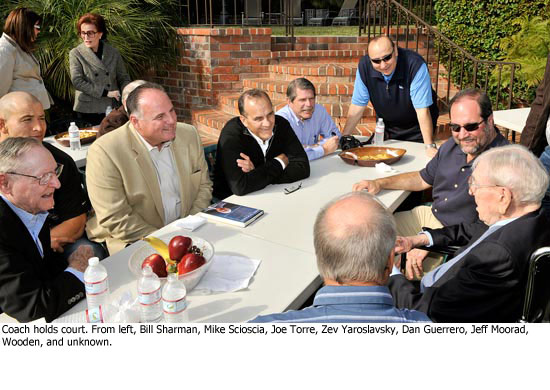

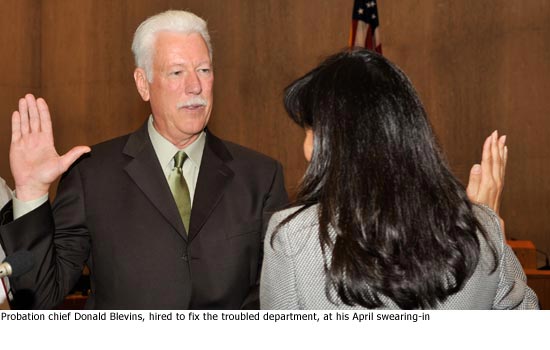


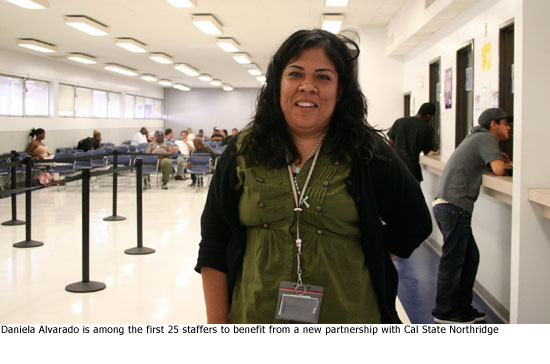
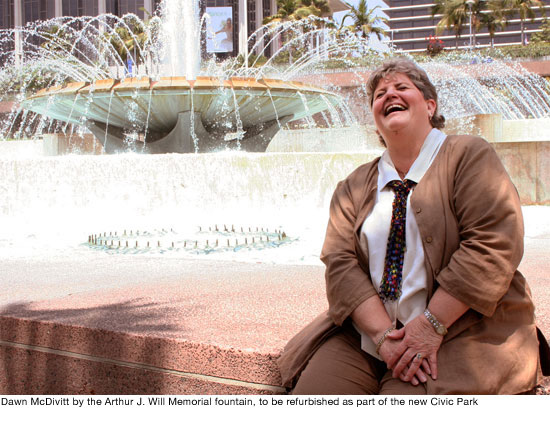






 Check for the latest closure information
Check for the latest closure information








